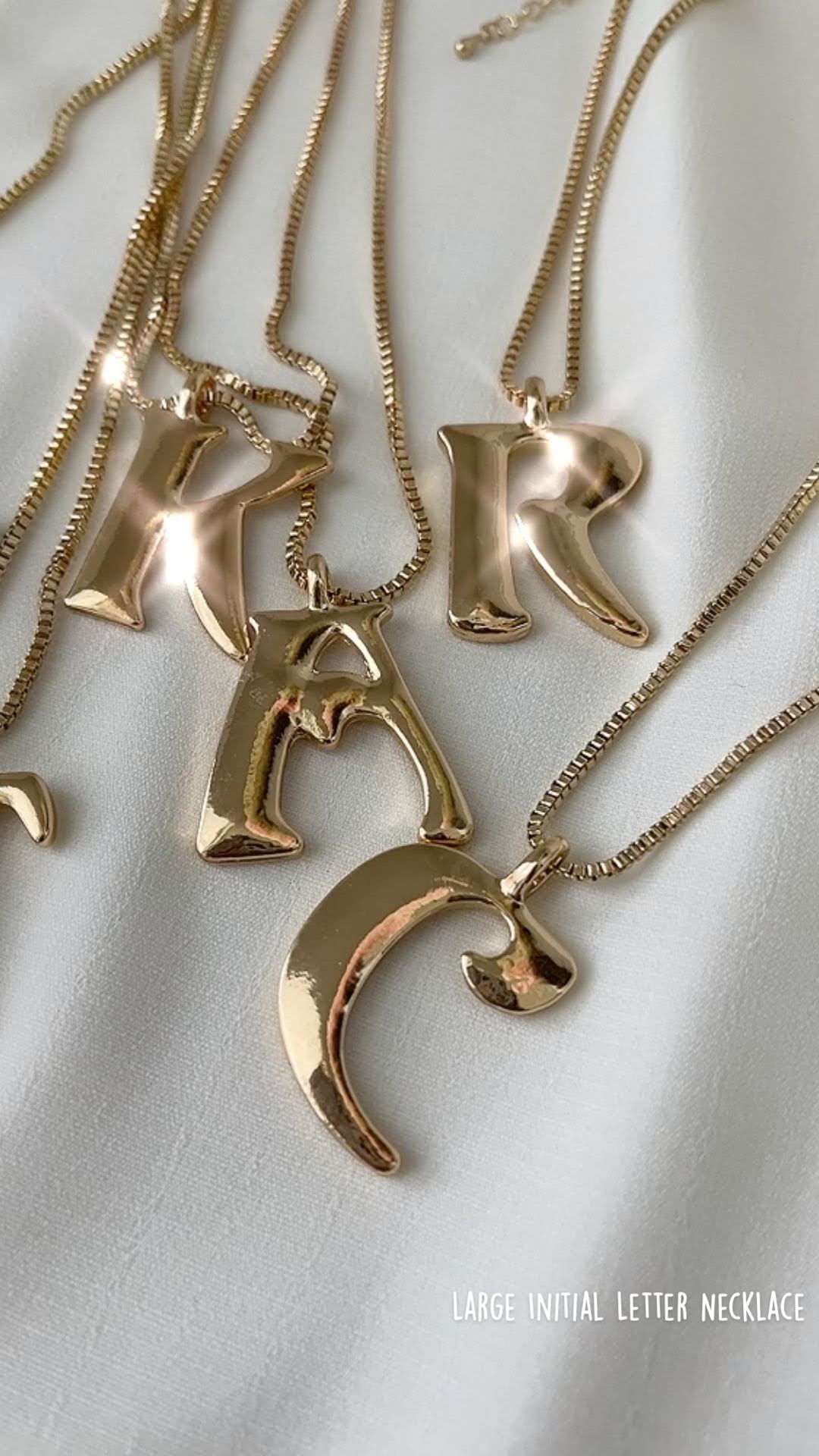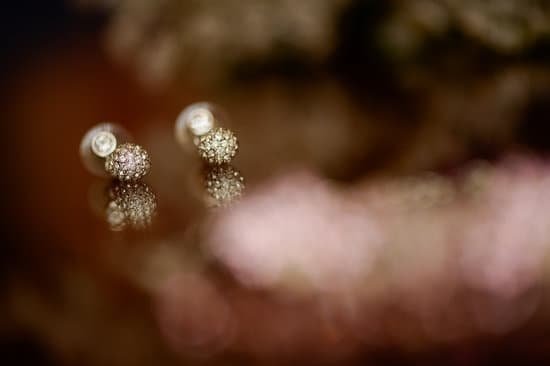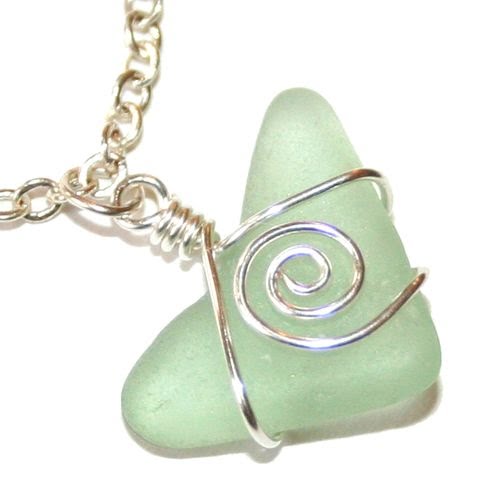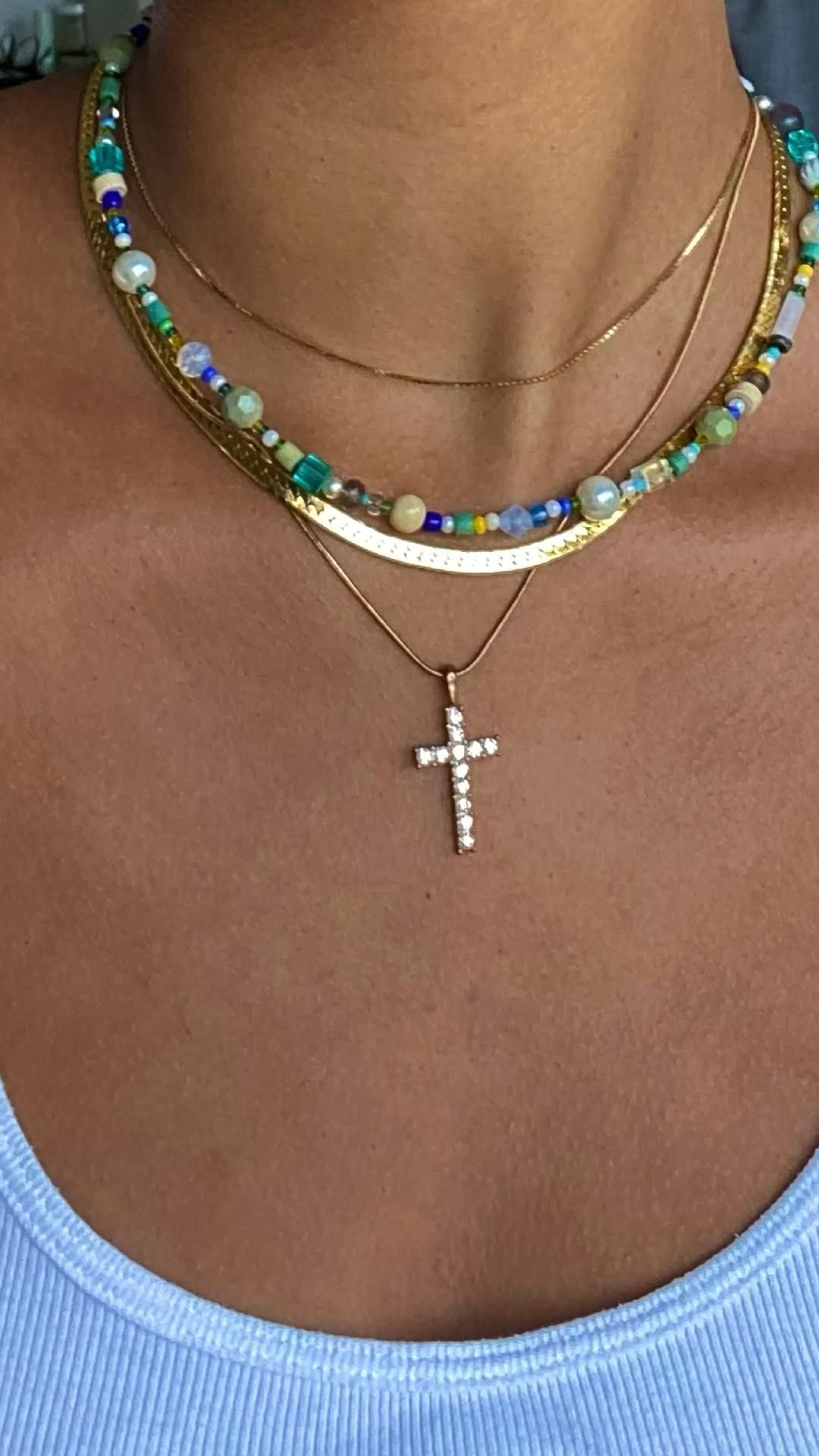Are you a jewelry enthusiast looking for the perfect storage solution? Look no further than a DIY jewelry cabinet. In this article, we will guide you through the process of building your own jewelry cabinet, allowing you to customize it to match your personal taste and fit the space available in your home.
A DIY jewelry cabinet is a must-have for anyone who wants to keep their precious pieces organized and easily accessible. Not only will it provide a dedicated space for your collection, but it can also serve as a beautiful decorative piece in your bedroom or dressing area.
In the following sections, we will explore various design options, discuss the materials and tools needed for the project, and provide step-by-step instructions on constructing your own jewelry cabinet. We will also delve into adding practical features like hooks, earring and ring holders, and mirrors for added functionality. Additionally, we will offer tips on creative customization with paint, stain, or decorative elements to make your jewelry cabinet uniquely yours.
Get ready to unleash your creativity and embark on this exciting DIY journey. With our guidance, you’ll learn how to create a stunning jewelry cabinet that not only showcases your collection but also reflects your personal style. So let’s dive in and discover the joy of crafting something beautiful while saving money in the process.
Choosing the perfect design
When it comes to creating a DIY jewelry cabinet, one of the first steps is to choose the perfect design that suits both your personal taste and the available space in your home. With a plethora of styles and sizes to consider, it’s important to explore your options before embarking on your project.
One popular style that many jewelry enthusiasts opt for is a wall-mounted jewelry cabinet. This type of design not only saves valuable floor space but also provides a stylish and functional addition to any room. Wall-mounted cabinets can range in size from small, compact units to larger statement pieces that serve as a focal point in the space.
For those who prefer more traditional storage options, freestanding cabinets are an excellent choice. These cabinets often feature multiple drawers, compartments, and hooks for organizing different types of jewelry. Freestanding cabinets come in various sizes, so you can find one that fits perfectly into the available space while still accommodating your collection.
When selecting the design for your DIY jewelry cabinet, it’s essential to consider both aesthetics and functionality. Think about how much jewelry you have and how you like to display or store it. Do you prefer hanging necklaces or having them laid out in compartments? Are earring holders or ring cushions important features for you? Take these factors into account when exploring different designs.
Once you have determined the style and size of your DIY jewelry cabinet, you can move on to gathering the necessary materials needed for construction.
Gathering the necessary materials
To start your DIY jewelry cabinet project, it’s important to gather all the necessary tools and materials. Having everything prepared before you begin will help ensure a smooth construction process and prevent any unnecessary delays. Here is a comprehensive list of the tools and materials you will need:
Tools
- Power drill.
- Screwdriver set.
- Measuring tape.
- Miter saw or circular saw.
- Clamps.
- Sandpaper or sanding block.
- Paintbrushes or foam brushes.
- Level.
Materials
- Plywood sheets for the cabinet base, frame, shelves, and doors.
- Wood glue or adhesive.
- Screws and nails in various sizes (make sure they are appropriate for the thickness of your plywood).
- Cabinet hinges and door handles.
- Wall mounting hardware (if desired).
- Hooks for hanging necklaces and bracelets.
- Small storage containers or trays for earrings, rings, and other small items.
It’s important to note that the exact quantity of materials needed will depend on the size and design of your jewelry cabinet. Take accurate measurements and consider any additional features you plan on adding before purchasing your plywood sheets.
When choosing plywood, opt for high-quality options that are sturdy enough to withstand the weight of your jewelry collection. You can also select plywood with a decorative finish if you prefer a more polished look for your cabinet.
In addition to these tools and materials, don’t forget to stock up on safety equipment such as goggles, gloves, and a dust mask. Safety should always be a priority when working on any DIY project.
By gathering these tools and materials beforehand, you’ll be well-prepared to embark on your DIY jewelry cabinet project. In the next section, we’ll discuss how to properly set up your work area for an organized and comfortable construction process.
Prepping the work area
Creating a well-prepared and organized work area is essential for any DIY project, including building a jewelry cabinet. By following these tips, you can ensure that your construction process goes smoothly and efficiently:
- Clear the space: Start by clearing out any clutter or unnecessary items from your work area. This will create a clean canvas and provide you with enough space to move around freely while working on your jewelry cabinet.
- Gather your tools: Before starting the construction process, gather all the necessary tools and materials needed for building your jewelry cabinet. This will save you time and prevent any interruptions during the construction process. Some essential tools may include a drill, screws, hammer, measuring tape, saw, sandpaper, and paint brushes.
- Create an assembly area: Designate a specific spot in your work area where you can assemble different components of the jewelry cabinet. This will help keep everything organized and prevent confusion during the construction process. Consider using a large table or workbench as your assembly area.
- Plan for storage: Arrange bins or containers near your work area to store small parts like screws, nails, or hooks. This will make it easier to find what you need when assembling different sections of the jewelry cabinet.
- Ensure proper lighting: Adequate lighting is crucial for any DIY project to accurately see measurements and make precise cuts. Set up additional task lighting in your work area if needed to ensure clear visibility throughout the construction process.
- Comfortable seating: Considering that constructing a jewelry cabinet may take some time, it’s important to have a comfortable seating arrangement in place. Whether it’s a stool or chair with proper back support, choose something that allows you to work comfortably for extended periods.
By taking these steps to prep your work area before starting your DIY jewelry cabinet project, you’ll be setting yourself up for success. A neat and well-organized workspace ensures that you have easy access to tools and materials, making the overall construction process smoother and more enjoyable.
Step-by-step construction process
Building the Base
To start constructing your DIY jewelry cabinet, you’ll need to build a sturdy base. Begin by measuring and cutting your plywood or MDF board according to your desired dimensions for the base. Next, assemble the pieces using wood glue and screws or nails to ensure a secure hold. Once the base is fully assembled, sand down any rough edges and apply a coat of primer or paint if desired.
Constructing the Frame
After completing the base, it’s time to move on to constructing the frame of your jewelry cabinet. Determine the height and width you want for your frame and cut out four lengths of 1×2 or 2×2 lumber accordingly. Use a miter saw or circular saw to make clean cuts at a 45-degree angle for each corner of the frame pieces.
Apply wood glue along each joint and secure them together with screws or nails. Repeat this process for all four corners until you have a complete frame.
Installing Shelves
With the frame finished, it’s time to add shelves to your jewelry cabinet. Measure and cut your plywood or MDF boards according to the desired dimensions for each shelf. Then, insert each shelf within the frame, making sure they are level and evenly spaced. Secure them in place using screws or nails from underneath, ensuring they are securely fastened but not visible from outside.
Creating Doors
To complete your jewelry cabinet, you will need doors that provide easy access while keeping your belongings safe and organized. Measure and cut two pieces of plywood or MDF board according to the desired size of each door. Attach hinges along one side of each door so that they can be easily opened and closed when necessary.
Once constructed, make sure all surfaces are smooth before painting or staining as desired.
Adding practical features
When it comes to designing your DIY jewelry cabinet, adding practical features can greatly enhance its functionality and make it even more convenient to use. By integrating hooks, earring and ring holders, and mirror options, you can create a space that not only stores your jewelry but also helps you easily find and organize your favorite pieces.
Integrating Hooks
Hooks are a great addition to any jewelry cabinet as they provide a simple yet effective way to hang necklaces, bracelets, and even some earrings. When incorporating hooks into your cabinet design, consider the size and placement carefully. You want to ensure that the hooks are sturdy enough to hold your jewelry securely without causing any damage. Opt for high-quality hooks made from materials such as metal or wood for durability.
Earring and Ring Holders
Earring and ring holders are essential for keeping these small items organized and easily accessible. There are various options available depending on your preference and the amount of storage space needed. For earrings, you can choose between earring cards, racks with holes or slots, or even DIY solutions like mesh screens or corkboards covered in fabric. As for rings, a velvet-lined tray with individual compartments is a classic option that works well for most collections.
Mirror Options
Including mirrors in your jewelry cabinet design can serve both functional and aesthetic purposes. A built-in mirror allows you to try on different pieces before deciding on your final look. Consider the placement of the mirror when planning out the overall layout of your cabinet. Installing a mirror on one of the doors is a popular choice as it maximizes space while still providing ample visibility.
By incorporating these practical features into your DIY jewelry cabinet design, you will create a functional storage solution that caters to your specific needs. Remember to take into account the size of your jewelry collection when determining how many hooks or holders you will need.
Additionally, consider how mirrors can enhance both the practicality and visual appeal of your cabinet. With these additions, you’ll have a jewelry cabinet that is not only beautiful but also efficient in keeping your collection organized and easily accessible.
Creative customization
One of the most exciting aspects of creating your own DIY jewelry cabinet is the opportunity to personalize it according to your own style and preferences. By adding paint, stain, or decorative elements, you can transform a simple cabinet into a unique and eye-catching piece of furniture that reflects your personality. Here are some tips on how to get creative with the customization of your DIY jewelry cabinet.
Firstly, consider the overall aesthetic you want to achieve. Are you looking for a sleek and modern look, or do you prefer something more rustic and shabby chic? The choice of colors and finishes will play a major role in achieving the desired effect. For a contemporary feel, opt for neutral tones such as white, gray, or black. If you prefer a more vintage-inspired look, consider using pastel colors or distressed paint techniques.
Once you have decided on the color scheme, think about incorporating decorative elements that will enhance the design of your jewelry cabinet. You can add trimmings such as beading or molding around the edges to give it an elegant touch. Alternatively, consider using stencils or decals to create intricate patterns or designs on the doors or sides of your cabinet.
Another way to personalize your DIY jewelry cabinet is by selecting unique hardware. The knobs or handles that you choose can make a big difference in the overall appearance of your cabinet. Consider using vintage-style knobs for an antique look or opt for sleek and modern handles for a contemporary appeal.
In addition to paint and decorative elements, consider staining the wood if you want to highlight its natural beauty. Staining can bring out the grain and add depth to the finish. Before applying any stain, make sure to sand down the surface of the wood and remove any existing varnish or paint.
Personalizing your DIY jewelry cabinet with paint, stain, or decorative elements allows you to create a one-of-a-kind piece that suits your personal style perfectly. Take this opportunity to let your creativity shine and make a statement with your jewelry storage solution. Whether you choose bold and vibrant colors or prefer a subtle and understated finish, the customization options are endless.
| Customization Options | Description |
|---|---|
| Paint | Select a color scheme that matches your style and use paint to transform the look of your cabinet. |
| Stain | If you want to enhance the natural beauty of the wood, consider staining it to bring out the grain and add depth. |
| Decorative Elements | Add trimmings, stencils, decals, or other decorative elements to create intricate patterns or designs on your cabinet. |
| Hardware | Select unique knobs or handles that complement your chosen design aesthetic. |
Organizational tips
Utilize drawer dividers and trays
One of the key aspects of keeping your jewelry collection tidy and easily accessible is employing smart storage solutions. Drawer dividers and trays are great tools for organizing your jewelry.
These dividers can be made from materials such as acrylic or wood, and they help separate different types of jewelry, such as earrings, necklaces, bracelets, and rings. By using dividers and trays, you can keep each type of jewelry in its designated section, making it easier to find what you’re looking for.
Install hanging organizers
Another useful organizational tip for your DIY jewelry cabinet is to incorporate hanging organizers. These can be in the form of hooks or rods where you can hang necklaces and bracelets. By utilizing this storage solution, your necklaces won’t get tangled up with each other, and you’ll have a clear view of all your options when deciding on the perfect accessory for your outfit.
Implement a compartmentalized earring holder
Earrings tend to be small items that can easily get misplaced or tangled together. To keep them organized, consider creating a compartmentalized earring holder within your DIY jewelry cabinet. You can make this by attaching a piece of metal mesh or fabric with small holes onto a frame. This allows you to insert earrings through the holes and securely store them in their individual compartments.
Labeling sections
To make finding specific pieces of jewelry even easier, consider labeling the different sections within your DIY jewelry cabinet. This could involve using small tags or labels to indicate which section is dedicated to rings, necklaces, bracelets, etc. By clearly labeling each section, you’ll save time searching for specific items.
Dedicated ring holders
If you own multiple rings or enjoy switching them out frequently depending on your mood or outfit, incorporating dedicated ring holders into your jewelry cabinet is essential. These can be in the form of small cushions or rows of slots that securely hold each ring. By having a designated space for your rings, you’ll prevent them from getting scratched or lost while also keeping them easily accessible.
By implementing these organizational tips, you can ensure that your DIY jewelry cabinet not only looks beautiful but also functions efficiently. It’s important to remember that every jewelry enthusiast has unique needs and preferences, so feel free to adapt these tips to suit your specific collection and style.
Maintenance and care tips
Once you have completed your DIY jewelry cabinet, it is important to take proper care of it to ensure its longevity. Regular maintenance and cleaning will not only keep your cabinet looking beautiful but also protect your precious jewelry. Here are some helpful tips on how to clean and preserve your DIY jewelry cabinet:
- Dusting: Dust can accumulate on the surface and in the corners of your jewelry cabinet, so it is important to dust it regularly. Use a soft cloth or a feather duster to gently remove any dust or debris. Avoid using harsh chemicals or abrasive materials that could scratch the surface.
- Cleaning the interior: The inside of your jewelry cabinet can become dirty over time from makeup residues, oils, and other substances that come into contact with your jewelry. To clean the interior, wipe down the shelves, hooks, and compartments with a mild cleaner and a damp cloth. Be sure to dry everything thoroughly before placing your jewelry back in.
- Jewelry storage: Properly storing your jewelry within the cabinet is crucial for preserving its beauty and preventing damage. Consider using individual storage containers for each piece of jewelry to prevent tangling and scratching. You can also use anti-tarnish strips or pouches to protect silver or other metals prone to tarnishing.
- Avoid moisture and extreme temperatures: Moisture can cause damage to both your cabinet and your jewelry, so make sure to keep the area where you store it dry and well-ventilated. Additionally, avoid placing your cabinet near sources of heat or direct sunlight as this can cause discoloration or warping.
By following these maintenance and care tips, you can keep your DIY jewelry cabinet in excellent condition for years to come. Remember that prevention is key when it comes to preserving the beauty of both the cabinet itself and your precious jewelry collection.
| Maintenance and Care Tip | Description |
|---|---|
| Dusting | Regularly dust the surface and corners of the jewelry cabinet using a soft cloth or feather duster. |
| Cleaning the interior | Use a mild cleaner and damp cloth to wipe down the shelves, hooks, and compartments inside the cabinet. |
| Jewelry storage | Store each piece of jewelry in individual containers to prevent tangling and scratching. Use anti-tarnish strips or pouches for metals prone to tarnishing. |
| Avoid moisture and extreme temperatures | Keep the area where you store the cabinet dry and well-ventilated. Avoid placing it near heat sources or direct sunlight. |
Final thoughts
After successfully completing your DIY jewelry cabinet, it’s time to celebrate your accomplishment and showcase your beautiful creation. Building a jewelry cabinet yourself not only saves you money, but it also allows you to customize the design according to your personal taste and needs. So, take a moment to pat yourself on the back for a job well done.
Now that you have this stylish and functional piece of furniture in your home, don’t be afraid to show it off. One great way to showcase your DIY jewelry cabinet is by finding the perfect spot in your bedroom or dressing area where it can be easily seen and accessed. Consider placing it on a dresser or vanity table, or even hang it on the wall as a decorative statement piece.
Another idea is to organize a jewelry party with friends and family. Invite them over to see your DIY masterpiece and encourage them to bring their own jewelry collections for display as well. It can be a fun event where everyone can exchange tips on organizing and caring for their precious accessories while admiring each other’s creations.
Lastly, don’t forget to share your DIY journey with others online. Take some high-quality photos of your finished jewelry cabinet and post them on social media platforms such as Instagram or Pinterest. Not only will you inspire others who are interested in DIY projects, but you may also receive valuable feedback and suggestions from fellow enthusiasts.
Conclusion
In conclusion, making a DIY jewelry cabinet is not only a practical project for jewelry enthusiasts, but it also allows individuals to embrace their creativity and save money in the process. By following the step-by-step construction process and incorporating personal touches through creative customization, readers can create a one-of-a-kind jewelry cabinet that perfectly matches their personal taste and style.
Not only does making your own jewelry cabinet provide a sense of accomplishment and satisfaction, but it also offers significant cost savings compared to purchasing a pre-made cabinet. By gathering the necessary materials and tools, readers can avoid the high price tag associated with store-bought cabinets while still achieving a professional-looking result.
Additionally, by utilizing organizational tips and smart storage solutions mentioned earlier in the article, individuals can keep their jewelry collection tidy and easily accessible without spending extra on specialized storage options.
By encouraging readers to showcase their creations, this article aims to inspire others to embark on their own DIY projects. Whether they are beginners or experienced DIYers, there is no better feeling than knowing you have created something with your own hands. So why not give it a try? Embrace your creativity, save money, and enjoy the pride that comes with making your very own DIY jewelry cabinet.
Frequently Asked Questions
How to build a recessed jewelry cabinet?
Building a recessed jewelry cabinet requires careful planning and measuring. First, decide on the location where you want to install the cabinet and ensure there’s enough space for it to recess into the wall. Next, create a simple frame using plywood or medium-density fiberboard (MDF) that matches the dimensions of your desired cabinet size. Cut out an opening in the wall where the cabinet will be placed, making sure to follow any necessary electrical or plumbing regulations.
Attach the frame securely to the studs in the wall using screws or nails. Install shelves and dividers inside the cabinet according to your jewelry storage needs. Finally, add a door with hinges that fits snugly into the opening, and finish it with paint or stain to match your decor.
How can I organize my jewelry at home DIY?
Organizing jewelry at home DIY can be both functional and aesthetically pleasing. Start by assessing your collection and deciding how you want to categorize your jewelry: by type (necklaces, bracelets), color scheme, or personal preference. Utilize various storage solutions such as small dishes or trays for rings and earrings, hooks for necklaces, and divider inserts for drawers to keep individual pieces separated.
Additionally, consider repurposing items around your home like ice cube trays or muffin tins to create compartments for different jewelry items. Displaying favorite pieces on a decorative tray or hanging them on decorative hooks can also add visual interest while keeping items easily accessible.
How do you make a wall jewelry box?
Making a wall jewelry box is a creative way to store and showcase your jewelry collection while saving space in your home. To start, choose a wooden shadow box or picture frame that has enough depth to accommodate your jewelry pieces without them touching the glass front when closed. Remove any backing material from the frame if needed. Next, measure and cut a piece of sturdy fabric such as velvet or felt that fits well inside the frame; this will serve as the background for displaying your jewelry securely without scratching it.
Attach the fabric to the backing board of the frame using glue or staples, ensuring it is taut and smooth. If desired, you can add small hooks, earring grids, or a rod for hanging necklaces inside the frame. Once your jewelry box is complete, hang it securely on a wall using appropriate hardware or hooks.

Welcome to my jewelry blog! My name is Sarah and I am the owner of this blog.
I love making jewelry and sharing my creations with others.
So whether you’re someone who loves wearing jewelry yourself or simply enjoys learning about it, be sure to check out my blog for insightful posts on everything related to this exciting topic!





